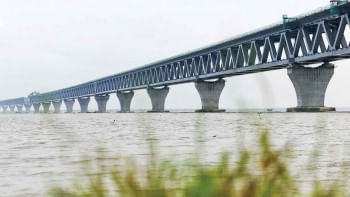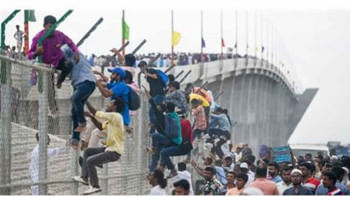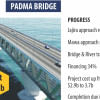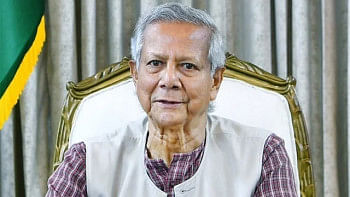One year on, how has Padma Bridge changed Bangladesh’s southwest?

Last year, on this day Bangladesh made global news as the country ushered in a new era of communication. Prime Minister Sheikh Hasina was there in person to inaugurate the megastructure – the Padma Multipurpose Bridge (PMB) – amidst a huge presence of excited onlookers and supporters. The 6.1km megaproject was seen not only as a remarkable achievement of the current Awami League government but also regarded as a major landmark in the development history of Bangladesh.
But the journey to make Padma Bridge a reality did not start smooth, owing to fund-related issues. Added to that, a variety of both national and international pressures posed a major challenge for the government in realising this project. But these obstacles were overcome and the dream finally came true; PMB was made with the country's own resources and is one of the largest river crossings in the world now.
But there is a persistent fear worldwide that despite its many socio-economic potentials, development projects such as PMB are likely to have adverse impacts on local communities. Most importantly among them is the fear that project-affected people are expected to face the loss of physical and non-physical assets (such as homes, land, resources, jobs, communities, social and cultural networks, and so on) that might trigger food, health, and social insecurities. So, now after one year of PMB, these are relevant questions to ask: How have these issues of concern been tackled in the case of PMB? Is PMB going to pay off its promised dividends over time? After the inauguration of PMB, to what extent has this mega project changed or improved local people's lives and livelihoods?
Although the local people were given housing and other facilities as compensation, PMB has directly impacted their livelihoods, especially those who lost a huge amount of cultivable land due to displacement. Usable cultivable land has been an important resource in areas adjacent to PMB as local communities find land for cultivation to be scarce. There is also a lack of proper infrastructure (such as mills, factories, and markets) in Munshiganj, Shariatpur, and Madaripur that could have generated alternative sources of income for locals.
As far as economic growth and connectivity are concerned, PMB is dubbed as a strategic instrument for achieving the development visions (e.g., Vison 2041) of the government by creating an urban space, infrastructure development, and accelerating myriad channels of growth. The southern regions of the country have been traditionally neglected and local people continue to experience a slow pace of growth. Another noteworthy aspect is with the removal of major physical barriers, PMB has set up a road connection between Dhaka and the southwestern part of the country.
Aside from the tangible benefits of a mega structure, local people also value non-monetised issues such as culture, good neighbourhoods, and other factors promoting inclusivity. Among the local communities, the general perception is that PMB has earned them a sense of pride, a distinct identity other than of course promoting connectivity.
PMB underpins the spread of urbanisation and development that is not only related to roads, railways, or telecommunication but also opening the doors to more public investment. It is also expected that cargo movement will increase between Dhaka to Mongla and Payra Ports and this will eventually reduce the immense pressure and reliance on Chattogram Port.
The bridge has also addressed issues arising from the limited ferry capacity to cross the Padma River, owing to which people had to wait for hours, especially on special occasions (e.g., Eid vacation). Ferry services were also unreliable as they would get suspended for a few days at a time due to inclement weather. The unsafe, overloaded, and unreliable ferry services contributed to the frequency of accidents as well. Now, passengers can save nearly two to three hours when travelling to southwestern districts via the Padma Bridge.
Data collected from resettlement and adjacent areas of PMB legitimises the argument that PMB is a role model among many mega projects in Bangladesh since it was developed through an inclusive participatory approach. This can be said because local communities exhibited a positive attitude and showed their overwhelming support by giving their lands for the mega project. Residents were very positive about PMB as it acts as an important source of opportunity creation at national level (e.g., tourism expansion, rapid industrialisation, etc) and on the local level (e.g., new job creation).
However, it is too early to judge, measure, or assess dividends fully sourced from PMB. It has been further revealed that although PMB offers some positive dividends, it also poses challenges that need consideration. For example, some pressing issues are directly related to resource allocation and livelihood security which was a monumental task to take on in the early stages of the project. Although the local people were given housing and other facilities as compensation, PMB has directly impacted their livelihoods, especially those who lost a huge amount of cultivable land due to displacement. Usable cultivable land has been an important resource in areas adjacent to PMB as local communities find land for cultivation to be scarce. There is also a lack of proper infrastructure (such as mills, factories, and markets) in Munshiganj, Shariatpur, and Madaripur that could have generated alternative sources of income for locals. Education facilities, an absolute necessity to be able to harness the full potential of PMB, are also scanty outside the camp areas in Mawa, Shibchar, and Jajira.
So, how can strategies of mega projects like PMB be better designed for addressing such concerns in the future? To ensure dividends, investing in people is crucial. Some pertinent issues also need to be considered at a micro-level (including investing in intangible human development components, especially health, and education and promoting river-centric tourism and eco-tourism to ensure livelihoods); and macro-level planning (developing appropriate communication, feeder road, investing in Mongla Port, and safeguarding the environment). Working on mega projects such as PMB with the country's own funds is a comparatively new experience for Bangladesh. Thus, post-monitoring of mega projects is crucial to get leverage in this area by bridging plans from local to national level. Since 2023 is the year of the mega project, proper implementation of this Padma Bridge project is crucial for taking it as a lesson learned for the other mega projects.
Razia Sultana, PhD, is a Senior Research Fellow at Bangladesh Institute of International and Strategic Studies (BIISS), under MoFA.

 For all latest news, follow The Daily Star's Google News channel.
For all latest news, follow The Daily Star's Google News channel. 








Comments